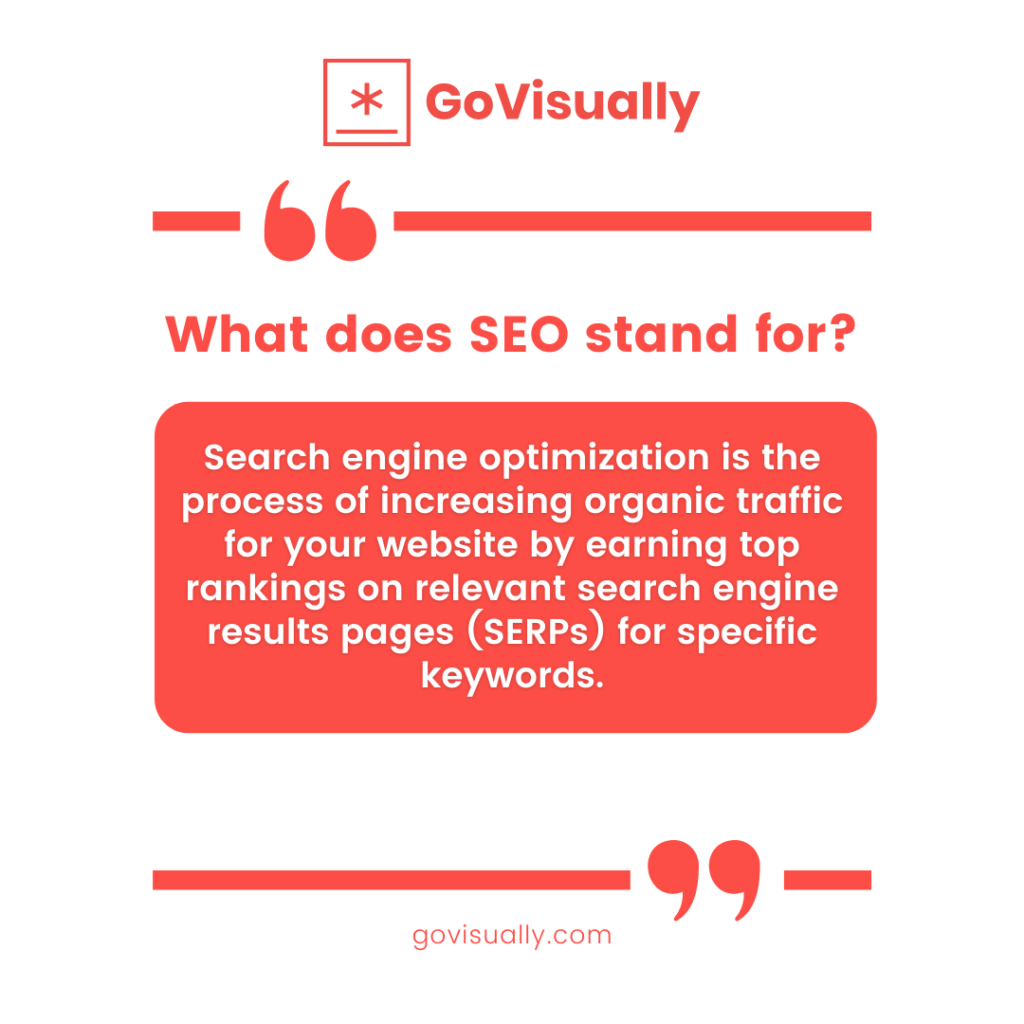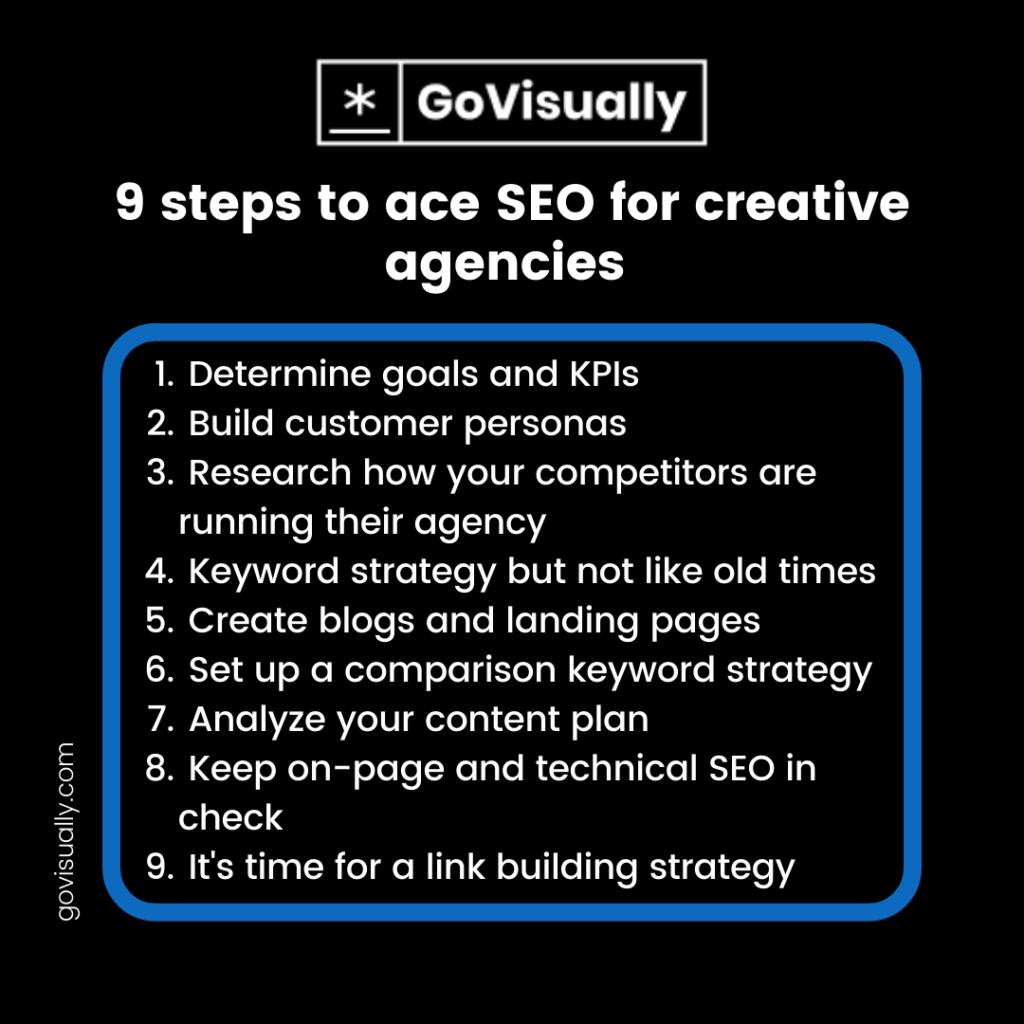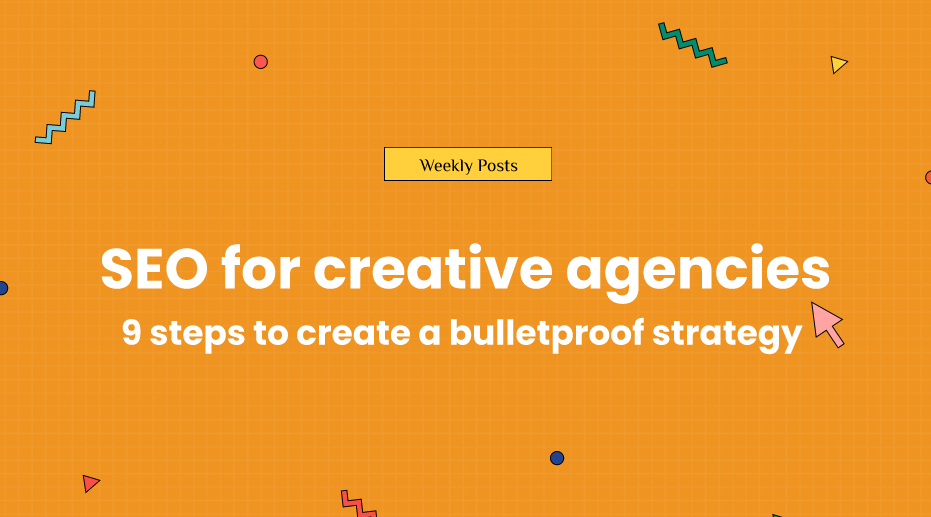Putting these two words together, strategy and SEO, is enough to make you fall into a research spiral and feel lost with the never-ending information thrown at you.
Worry not! We’re about to make it much simpler for you to understand what SEO for creative agencies means and how you can create a flawless strategy for your SaaS marketing plan by bringing expert advice and research to you so you won’t have to go down that road.
It all starts with getting your website out in the digital realm, so make sure you keep your team updated with SEO basics for web developers and have them implemented before coming up with an SEO strategy to match your goals.
Now, if you’re ready to develop an impeccable SEO strategy for your SaaS or creative agency, let’s dive right in!
Table of Contents
What does SEO stand for, and why do you need a strategy?
After all these years of digital evolution and marketing, everyone with a business knows what SEO stands for, but we’ll still reinforce an introduction. Search engine optimization is increasing organic traffic for your website by earning top rankings on relevant search engine results pages (SERPs) for specific keywords.
If you’re new to the digital marketing game, starting with a beginner’s guide to SEO is better to understand all the basics before you jump into a strategy.
While you must already know why SEO itself is necessary, let’s move on to the more important part of why you need an SEO strategy for creative agencies in the first place.

There are different SEO strategies you must approach based on the types of platforms you’re using or the types of content you’re creating. This means that a single and vague explanation of what your strategy should look like won’t be of any benefit.
For example, businesses with a physical location benefit more from Local SEO, and online e-commerce businesses are more sales focused in their strategy with performance marketing. Then, what about creative and SaaS agencies?
The answer lies with the question, what is SaaS marketing?
What is SaaS marketing?
To be precise, a content-led SEO approach is the basis of SaaS marketing. It’s different from other approaches because, for a creative agency, its platform itself is a product. The idea here is not to sell people your services but to bring them a solution for a specific problem.
It’s worth mentioning here that most SaaS platforms and creative agencies opt for performance marketing to increase their sales acquisition with paid Ads and all, but they soon realize that this strategy will add up to a loss in the long run.
This is why you need a SaaS SEO strategy specifically designed for your creative agency to make the most of your SEO venture and bring organic, unpaid traffic to your platform that is actively looking for your solutions.
Cut design & video review time in half
Try GoVisually free today!
While there are significant differences between SEO for creative agencies and traditional SEO for small businesses, it is still important to remember that Google’s main ranking factors remain the exact same for all different types of businesses, like sitemap, content, and backlinking.
9 steps to ace SEO for creative agencies
Now that we’re done with the explanations and theories, it’s time to get right into the practical part of creating an indestructible, bound-to-be successful kind of SEO strategy for creative agencies in 10 not-so-simple simple steps.

1. Determine goals and KPIs
In order to grow a business, you must start with clear objectives and metrics you can track along the way; it’s a rule of thumb for SEO of any type. Otherwise, you’ll be working blindly and without direction.
Knowing what you want to accomplish helps everyone involved understand where you’re heading and how to meet your needs best. With a goal, you can easily determine whether or not you’re on the right path, so you can adjust accordingly if needed.
Likewise, solid SEO KPIs are an absolute must if you stay competitive in today’s industry. Alongside the KPIs you’ve grown accustomed to reporting on (traffic, impressions, rankings, traffic, etc.), you’ll need to measure and analyze against metrics such as MQLS, SQLS, and many others. So ensure you’ve got the right tools like Google Analytics and Ahref to help you.
2. Build customer personas
The right way to think about SEO for creative agencies is in terms of problems, customer personas, and solutions. When you’re targeting the right audience and understanding the buyer persona completely, you can tailor your strategy to attract the audience that really matters to you.
The lengthy option is to start from scratch and develop a profile of the people you would like to attract as a step-by-step process. The alternative option is to analyze your current customer base and then find out what information you can glean from them.
In order to do this, you need to know a little about how they interact with you already. For example, the best method of marketing to someone is to send them something they might actually enjoy reading, so figure out what converted your previous subscribers the most and focus on that.
3. Research how your competitors are running their agency
In order to truly dominate your market, you must understand how your direct competitors’ SEO strategies work and how they’re getting their organic traffic. Direct competitors usually offer the same solutions as you.
You also must dig deep into your indirect competitors because they may provide better insight into your own goals and shortcomings. These indirect competitors are those who offer a product that is fundamentally different from yours but helps your prospect solve a similar issue.
So while you’re going on with the essential competitor analysis, consider both direct and indirect competitors and use organic search tools to track how they perform and what parts of their content-led strategy stand out the most.
4. Keyword strategy but not like old times
When it comes to SEO for small businesses, the typical way to go is to target shorter high-volume keywords in your niche to get more recognition. However, things are changing in the SEO game, with long-tail keywords becoming more important.
It’s true that for SaaS SEO, you should likely target the top-of-the-funnel keywords more. However, remember that the strategy should focus more on sending the audience down the funnel for a creative agency and SaaS platform.
In that case, you should spread your content around different topics while keeping your buyer personas in mind and use long tail keywords that users search for when looking for a solution like your platform.
5. Create blogs and landing pages
Searchers are actively looking for your solution. This is why you can’t stick to a single method to get your content out in the wild. After you’ve figured out your keyword strategy, creating both blogs and landing pages is the best way to go.
With SEO, you also want to fulfill different types of user intent when creating content. Blogs can help you target users in the discovery phase, and landing pages are more sales oriented to push the users into making a transaction.
In a content-led strategy, the more you put out there, the better. Also, don’t forget to use UX/UI the right way with essential design components to keep your audience engaged and satisfied.
Remember, an active blog presence can help you establish and maintain your authority in the digital world. And while some view doesn’t view it the same way, it is your steady ladder to success.

6. Set up a comparison keyword strategy
Once your prospects surpass the initial excitement of signing up to your platform, they must compare you against the competition. You want to ensure they find out you’re the best option, so be prepared to offer something unique. Think about how you can stand out from the crowd and show why you’re superior.
This is the point in your SEO for creative agencies where you create content that represents you vs them. It can be comparison guides, ranking competitor platforms, and other types of content where you compare your credibility with them.
Comparison keywords are mostly searched when a user is at the final stages of making their transaction and wishes to find the best option. Use them wisely.
7. Analyze your content plan
Your content’s main goal should be to be better in quality and structure around your user personas to fulfill their search intents. This means creating longer, more in-depth, and better-formatted content.
You should also use images, videos, and everything related to the content to keep it engaging and avoid serious content mistakes that could turn your audience off and make them bounce back.
It may sound simple, but with so much competition in the market, you should aim to create content that actually matters for you and your readers, and the search engines will rank it, no questions asked.
8. Keep on-page and technical SEO in check
Just because successful SEO for creative agencies is often powered by content doesn’t mean you can ignore the significance of technical and on-site SEO. If your website suffers from technical issues or is not well optimized from an on-site perspective, it will not be able to reach its full potential.
With more than a hundred factors like responsiveness, fast page speed, and metadata at play in SEO, you should stay ahead of technical features in your website and get the experts working on on-page SEO right away.
9. It’s time for a link-building strategy
Without backlinks, the content will struggle to rank! At least for high-volume keywords. To gain backlinks, you need to put together an awesome link-building strategy that can get you relevant links to your content but don’t forget that links do more than just help your site rank on google.
The best link-building strategy puts you in front of your audience and drives referral traffic, positioning you as an authority. Your SEO plan should also include establishing your blog with source content, where other blogs can link to them and add to your brand authority.
Want to send big files?

Need a quick way to share large files and creative assets?
With GoVisually Share, it’s absolutely free! Try today.
Final takeaway
Whether it’s SEO for small businesses or creative agencies, it should be a core component of your marketing plan. You may not think about it now, but if you’re serious about growing your customer base and increasing revenue, you’ll eventually have to focus on SEO and create a strategy that fits your goals.
Of course, it doesn’t end with one strategy since SEO is an ongoing process for every business out there. You can use these steps to understand the most important parts of SaaS SEO and make an outline you can get back to anytime to make changes.
We hope to see you around ranking on the top!




